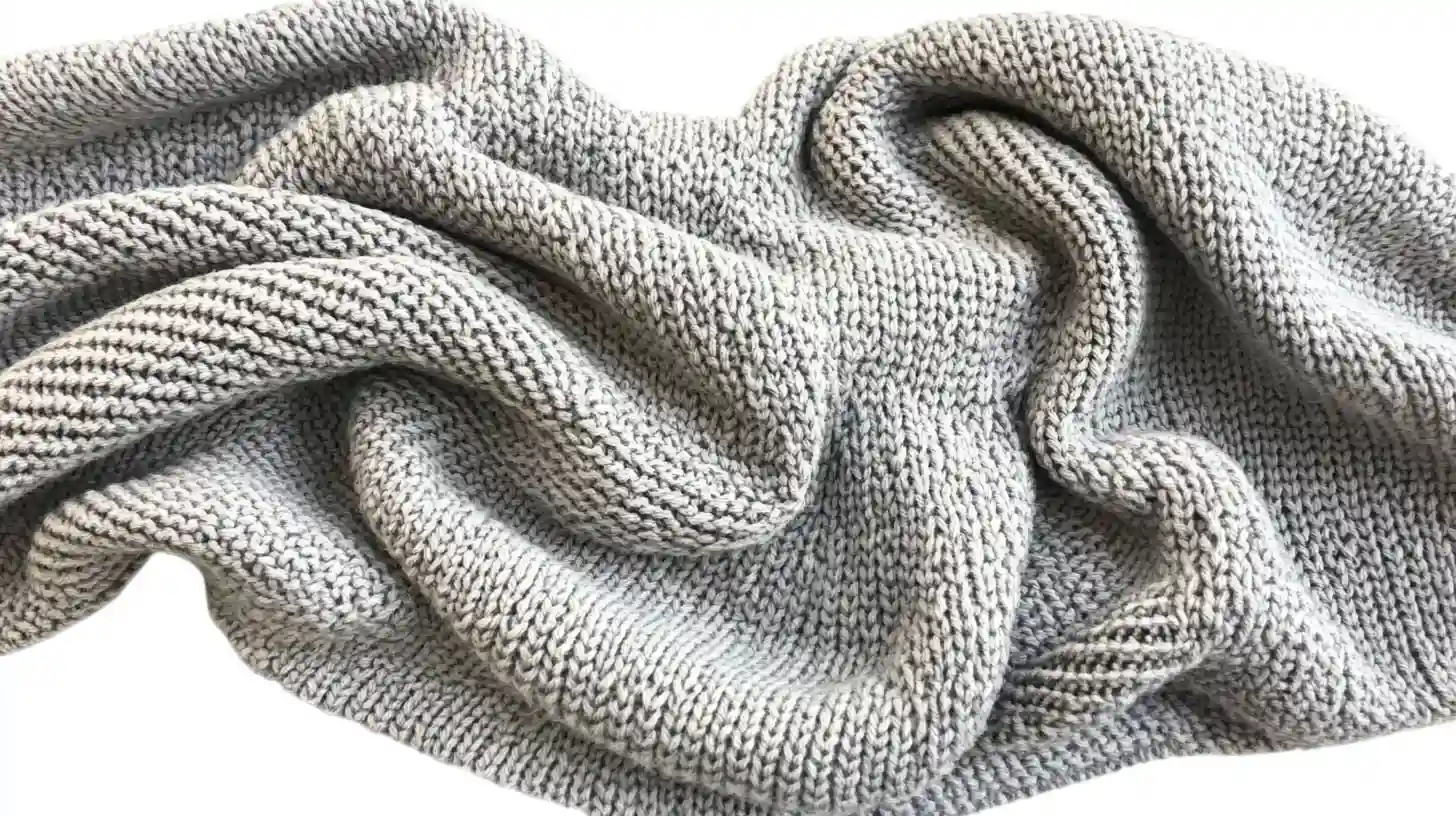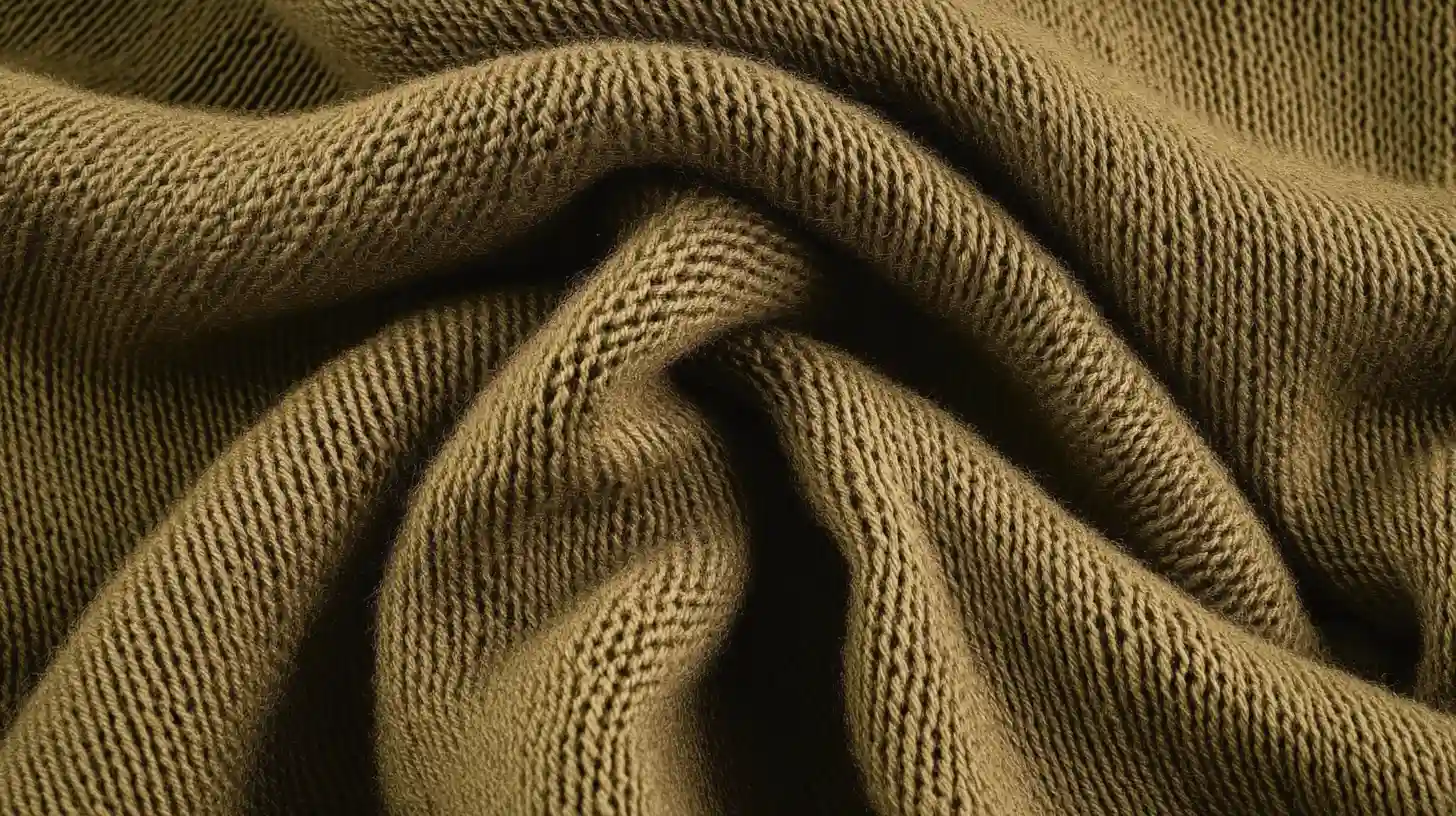Do you know jersey knit fabric? It's a versatile and popular material known for its softness, stretch, and comfort. Originally derived from the island of Jersey in the Channel Islands, this fabric is primarily made from cotton, although blends with synthetic fibers are common.
Its unique structure allows for excellent softness and flexibility, making it an ideal choice for various clothing items. Understanding jersey knit fabric opens the door to exploring its numerous applications in fashion and textiles.
Key Takeaways
- Jersey knit fabric is stretch, soft, and breathable, making it ideal for comfortable clothing.
- There are various types of jersey knit fabrics, including single, double, cotton, and blended jersey.
- Jersey knit is versatile, used not only in fashion but also in home items and industrial applications.
- To care for jersey knit, wash gently in cold water, use mild detergents, and air-dry when possible to maintain its softness and durability.
- Customization options like dyeing and printing on jersey fabric allow for creative expression.
What Is Jersey Knit Fabric? An Overview

Jersey knit fabric is stretch, soft, and very useful. It's made by knitting, giving it a smooth front and a slightly rough back. This design makes it great for comfy clothes that need to stretch. You can find jersey knit in t-shirts, dresses, and workout gear. It's light and lets air through, making it perfect for daily wear.
What's the Origin of Jersey Knit Fabric?
Jersey knit fabric originated on Jersey Island in the Channel Islands. In the Middle Ages, wool made this fabric for fishermen's clothes. It was strong and warm for tough weather.
Later, jersey knit became more than just workwear. In the 1900s, Coco Chanel brought it into fashion, showing how jerseys could be stylish yet comfortable for women's clothing. Today, you see jersey knit everywhere—from everyday outfits to fancy designs.
How Jersey Knit Fabric Is Made?
Jersey knit fabric is knitted instead of woven together. Single jersey uses a single yarn set; double jersey uses two sets. A single one has a smooth front but a rough back; a double one feels thicker and stronger.
The process starts with picking yarn, such as cotton for its softness or polyester for its strength. The yarn is then put into machines that loop threads together to make stretchy fabric. After knitting, the fabric is dyed or treated to improve its look or use—for sportswear or home items!
What Are Some Types of Jersey Knit Fabric?

Different types of jersey fabric have unique features. Knowing these types helps you pick the best one for your needs. Here are the main kinds:
- Single Jersey: This is very common. One side feels smooth, and the other feels rougher. It's light and stretches easily, so it's great for T-shirts and casual clothes. This fabric is breathable and comfy for daily wear.
- Double Jersey: A double jersey, also called an interlock jersey, uses two-needle sets to make it thicker and stronger than a single one. Both sides feel smooth, but the jersey stretches less. It works well for jackets, skirts, or heavier tops.
- Cotton Jersey: Cotton jersey fabric is soft, airy, and gentle on the skin—perfect for summer clothes or baby outfits. Its durability makes it a favorite choice.
- Polyester Jersey: This jersey is made of tough, wrinkle-free synthetic fabric. It dries fast and keeps its shape after washing, making it a great pick for sportswear or activewear.
- Jacquard Jersey: This type features complex patterns created during the knitting process. It's often used for more decorative garments.
- Rayon Jersey: This silky jersey is suitable for dresses or scarves. It's lightweight yet elegant and is often used in stylish clothing.
- Viscose Jersey: Made from viscose fibres, this type of jersey is soft, smooth, and has a beautiful drape. It's often used for dresses, blouses, and others that benefit from a fluid silhouette.
- Wool Jersey: Wool jersey is warm but allows air to pass through. It suits winter items like sweaters or scarves.
- Rib Knit Jersey: Characterized by its raised vertical lines, this fabric is stretched across the width. It's often used for cuffs, collars, and hems.
- Blended Jersey: Blended jerseys mix fibres like cotton with polyester or elastane to improve softness or stretchiness while staying durable.
Each jersey fabric fits different needs—from cool summer wear to cozy winter outfits!
Features and Advantages of Jersey Knit Fabric
- Stretchability: Jersey knit fabric is highly stretchable, offering flexibility and comfort. It usually stretches horizontally and vertically, making it ideal for garments requiring movement.
- Softness: This fabric is known for its soft and smooth texture, which feels comfortable against the skin.
- Breathability: Jersey knit fabric is breathable, allowing air to circulate easily, which makes it suitable for warm-weather clothing.
- Durability: It's relatively durable and can withstand regular wear and washing without losing shape.
- Wrinkle Resistance: Jersey knit tends to resist wrinkles, maintaining a neat appearance with minimal ironing.
- Draping: The fabric drapes well, providing a flattering and flowing appearance in garments like dresses and skirts.
- Absorbency: Cotton jersey knit, in particular, is highly absorbent, making it comfortable to wear in different climates.
Common Uses of Jersey Knit Fabric
Apparel
Jersey knit fabric is great for making comfy clothes. It stretches and feels soft, perfect for T-shirts and leggings. The fabric moves with you, giving a snug but airy fit. Activewear, like yoga pants, uses it to keep you cool and dry.
For casual outfits, jersey knit feels light and cozy all day. Dresses and skirts made from it look smooth and neat. Whether relaxing at home or going out, this fabric keeps you comfy while looking nice.
Home Items
Jersey knit fabric works well for home items, too. Its softness makes it great for sheets and pillowcases. It feels gentle on your skin, helping you sleep better. The fabric also lets air flow, keeping you cool at night.
Blankets made from jersey knit are warm but not heavy. They're perfect for cuddling on the couch or adding warmth to your bed. Plus, its wrinkle-free design keeps your home looking tidy without much effort.
Accessories
Jersey knit helps make accessories as well. Scarves feel soft and light so that you can wear them anytime. The stretchy material lets you style them in many ways.
Headbands and hats made from jersey knit are comfy to wear daily or during workouts. They stay in place without hurting your head. Even bags like totes use this strong fabric to hold up under regular use.
Industrial and Technical Uses
Jersey knit fabric is useful for more than just clothes. Its unique features make it helpful in many industries. You might not know how flexible this fabric is until you see its uses.
- Automotive Industry: Jersey knit fabric is common in car interiors. It's stretchy and strong, perfect for seat covers and headrests.
- Medical Textiles: Hospitals use jersey knit fabric to help patients feel better. It's used in gowns, bandages, and compression clothes.
- Sports and Performance Gear: Sports gear often uses jersey knit fabric for gloves, knee pads, and protective clothing.
- Industrial Workwear: Workers wear jersey knit fabric uniforms comfortably. They're comfy, can withstand tough conditions, and allow easy movement.
- Technical Applications: This fabric is also used in technical tools like filters or insulation materials. Its design traps particles well for air or water filters. In insulation, it provides lightweight warmth without bulkiness.
Washing and Caring Tips for Jersey Knits

Taking care of jersey knit keeps it soft and lasting longer:
- Wash Gently: Wash in cold or warm water only—hot water harms fabrics. Use gentle cycles to avoid damage during washing.
- Use Mild Detergents: Pick soft detergents without harsh chemicals to protect colors from fading or weakening.
- Don't Overload Washer: Wash similar fabrics together. Too many items can pull or stretch them out of shape.
- Dry Carefully: Air-dry flat whenever possible to keep the shape intact; if using a dryer, low heat works best.
- Iron Lightly If Needed: Iron gently on low heat with cloth protection over the fabric to avoid burns or shiny marks.
- Store Neatly Folded: Fold instead of hanging heavy items like sweaters—they may stretch over time if hung up.
Customization and Flexibility of Jersey Knit Fabric
Adding Colors and Patterns
Jersey knit fabric is great for adding colors and patterns. It soaks up dye well, making bright or soft shades look amazing. You can easily create bold designs or simple looks with this fabric.
- Dyeing: Dyeing jersey knit fabric gives you many color choices. Cotton absorbs dye deeply, creating solid and lasting colors. Synthetic fibres need special dyes but still look bright. The smooth surface helps spread the color evenly, perfect for solid-colored clothes or home items.
- Printing: Printing on jersey knit allows endless design options. Techniques like screen printing or heat transfer work perfectly on it.
Fiber-Based Adaptability
The flexibility of jersey knit fabric depends on the fibres used to make it. Different ones give the fabric special features to match your needs.
- Natural Fibers: Cotton and wool make jersey knit soft and breathable. Cotton feels gentle on the skin and is great for daily wear or baby clothes. Wool adds warmth without being heavy, perfect for winter sweaters or scarves.
- Synthetic Fibers: Synthetic fibres make jersey knit tough and useful in many ways. Polyester doesn't wrinkle and dries fast—perfect for sportswear or active outfits. Rayon feels silky with a nice flow, great for dresses or fancy clothing.
- Blended Fabrics: Blended jerseys mix natural and synthetic fibers for better results. For example, cotton-polyester blends feel soft but stay strong longer. Adding spandex makes them stretchier—ideal for leggings or fitted clothes.
Conclusion
This stretch jersey knit fabric is soft and very useful. Its special features make it great for comfy and stylish clothes. The type of fibers and how it's made decide its uses. It works well for cool summer outfits or tough workout gear.
Try using jersey knit in your next project to see its benefits. Learning about this fabric can help you create practical and trendy items.
Learn more fabric knowledge on the Longan Craft Blog, and dive into the fabric world with Longan Craft!


0 comments